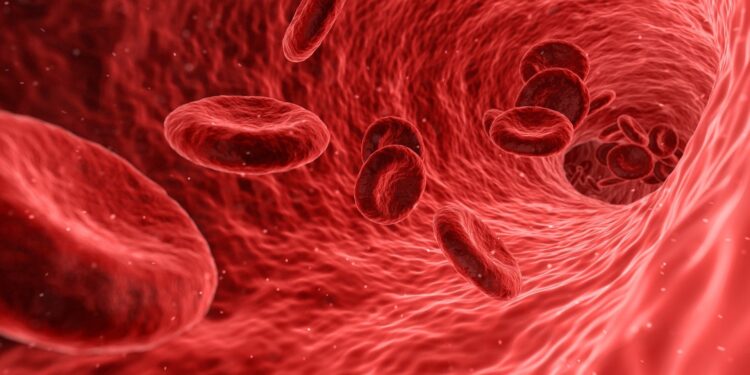Credit: Public domain CC0
Somewhere in a patient’s body, a small tuft of cells, without being detected, began to form a tumor. He has not yet caused pain or symptoms visible to illness. In several months, or perhaps years, these first signs will cause a doctor’s request, a reference to a specialist and a possible diagnosis. The treatment will depend on the duration of unnoticed cancer and the distance to which it has spread.
There were early signs, but not those that the patient or the doctor could have noticed. Small RNA fragments, rejected from dying cells or spit twisted transcriptions of the tumor, floating in the bloodstream – signals of a distress fabric.
A new method developed by Stanford researchers aims to bring the time to start at the start closer. They have developed a blood-based method called rare-seq which detects RNA without cells derived from the tumor with approximately 50 times the sensitivity of standard sequencing techniques.
Rare-Seq has shown a capacity to identify the signatures of lung cancer in patients at various stages of the disease, surpassing approaches based on commonly used DNA. RNA from vaccines and numerous transcripts associated with cancer -related conditions were also detectable.
Blood -based liquid biopsies offer a non -invasive approach to capture cancer changes by identifying circulating tumor DNA. This allows detection, genotyping and early monitoring of the disease, even when specific tumor locations are unknown or would require surgical biopsy to study.
RNA without cells, fragments of RNA released in blood circulation by dying or active cells, has a broader diagnostic vision of gene activity throughout the body. Detection requires precision because most RNA circulating in the blood circulation come from blood training cells rather than tumors. RNA molecules derived from rare tumors are often masked by the background signal of these hematopoietic transcripts.
In the study, “an ultra -sensitive method for the detection of the cell without a cell”, published in NatureThe researchers have designed rare-seq (random start and affinity capture of RNA fragments without cells for sequencing enrichment analysis), a method optimized for cell without cell detection.
The samples analyzed in the study included 437 plasma collections of 369 individuals. Participants represented a range of cancer stages, non -malignant conditions and healthy controls drawn from several clinical centers.
The researchers optimized the full experimental workflow to analyze the cell without cells in the plasma. Pre-analytical variables such as blood collection, RNA extraction and samples storage have been systematically evaluated to reduce variability.
The stages of the preparation of the library have been adapted to a low RNA entry, including the enzymatic elimination of contaminating DNA, an improved additional DNA synture and final repair protocols to improve efficiency.
A central characteristic of the method implies a selective enrichment of the transcriptions using a capture panel during the preparation of the library. The researchers used molecular probes to isolate 4,737 rare abundance genes and 50 household maintenance genes. These genes have been selected because they are generally weak or absent in healthy plasma and are more likely to reflect the specific RNA for tissues or linked to the disease.
A calculation model has been developed to eliminate expression noise caused by residual platelet RNA. This model has identified genes of genes linked to contamination of platelets and adjusted for them using data from healthy reference samples.
The expression signatures detected by the rare SEQ associated with non -small cell lung cancer in 101 of the 139 participants with previously confirmed lung cancer. Detection rates increased by the cancer stage, with 30% in stage I, 63% in stage II, 67% in stage III and 83% in stage IV.
In a head to head comparison using paired plasma samples, Rare-SEQ identified cancer in 34% of the cases that were missed by DNA analysis, while no sample was detected by DNA alone.
Rare-SEQ also identified somatic driver mutations in 28% of patients with pulmonary adenocarcinoma as well as 1% of witnesses. The known variants such as the EGFR, the Kras and the RET were among those detected by the sequencing of the RNA.
Rare-Seq revealed RNA expression profiles without cells associated with histological transformation, amplification has encountered and resistance to drugs in patients treated with therapies by EGFR targeting. In a patient, RNA markers without cells from the transformation of small cells decreased after chemotherapy, reflecting a lag of the tumor state.
For samples unrelated to cancer, the RNA of mRNA vaccines was detected up to six weeks after the administration. Transcriptions linked to COVVI-19 infection, pulmonary lesions and mechanical ventilation have also been found, especially in people with recent tobacco exposure or active pulmonary disease.
In this preliminary validation, Rare-SEQ has reached levels of detection sensitivity beyond those of current DNA methods, identifying RNA derived from the tumor at extremely low concentrations. The detection of gene activity models and cancer mutations from a single blood sample has enabled a detailed molecular characterization of pulmonary tumors and resistance mechanisms.
The results imply a much broader utility for cell analysis without cells under cancer and non-cancer conditions. Rare-SEQ introduces a base for future blood tests that capture the changes of expression of genes in a wide range of clinical scenarios. Diagnostic use will require clinical trials in cancer at an early stage and sets of extended reference data for RNA without cells.
More information:
Monica C. Nesselbush et al, an ultrasensible method of cell detection without cell, Nature (2025). DOI: 10.1038 / S41586-025-08834-1
Trine B. Rénge et al, the very sensitive method capture of rare RNAs in the blood to seek a disease, Nature (2025). DOI: 10.1038 / D41586-025-01127-7
© 2025 Science X Network
Quote: A new blood test detects RNA without cells derived from the tumor with high sensitivity (2025, April 21) recovered on April 21, 2025 from
This document is subject to copyright. In addition to any fair program for private or research purposes, no part can be reproduced without written authorization. The content is provided only for information purposes.



